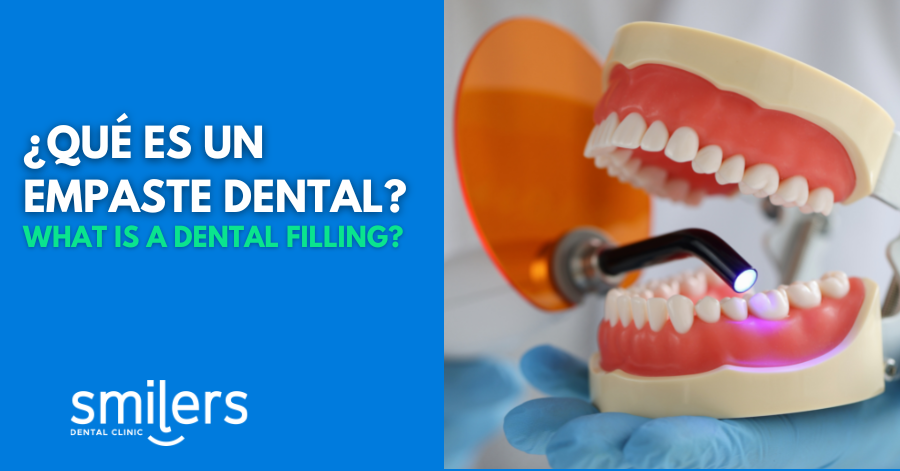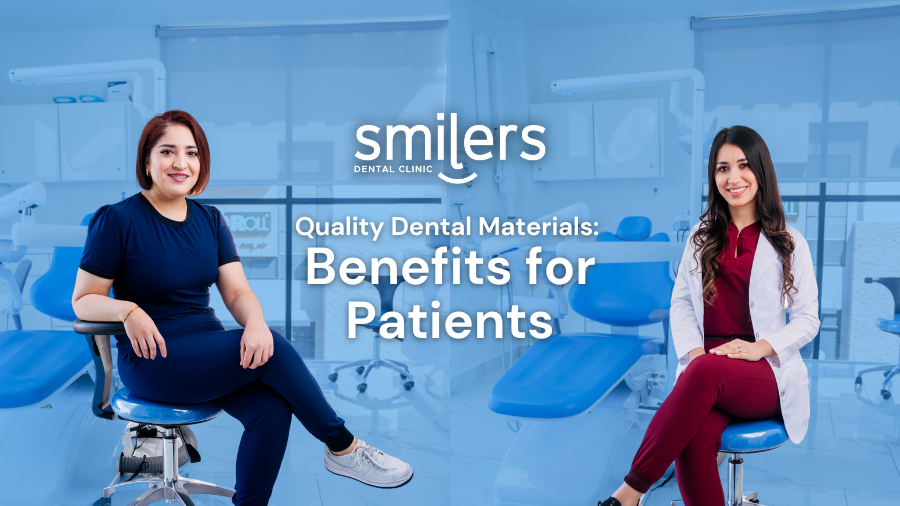Dental aesthetics play a very important role in today’s society, which is why dental treatments that primarily aim to improve aesthetics have become a trend nowadays.
In the field of cosmetic dentistry, teeth whitening is one of the most sought-after aesthetic procedures today, as it is one of the dental treatments that have a greater visual effect.
In this article, we will address some of the most common questions related to teeth whitening.
What is Teeth Whitening?
We can define teeth whitening as the process aimed at removing dental stains that are lodged in the enamel as well as achieving a whiter and brighter smile.
Today, we have a wide variety of techniques available for teeth whitening, allowing each patient to choose the technique that best suits their needs. It is crucial that any process be carried out by a specialist.
It involves the application of a whitening gel on the tooth surface (usually hydrogen peroxide or carbamide peroxide). Then, a LED or laser light is used to activate the gel, allowing the whitening agent to work more quickly.
But before discussing the types of procedures, it is important to understand what factors determine the natural color of the teeth.
What determines the natural color of our teeth?
If we think of it from the inside out, the teeth themselves are made of ‘dentin,’ a substance that is the second hardest in the body and makes up most of the dental tissue. At the root level, it is covered by cementum, and in the tooth’s crown, it is covered by enamel. Its natural color is yellowish.
Dental enamel, on the other hand, is the most resistant tissue in the body and covers the dentin in its visible part in the crown. It is mainly composed of minerals and is a pale yellow or grayish white color. Depending on its thickness and quality, it will reveal more or less of the dentin. Therefore, the color of the teeth depends on the quality of these two elements. The genetic factor, which determines the variations in shade between different individuals, should also be taken into account.
Types of Teeth Whitening
There is a variety of teeth whitening methods, but what they all have in common, as well as their goal, is the action they exert on the teeth, which in most cases involves wearing down part of the dental enamel to reduce the natural shade, and provide a whiter and brighter color.
This means that teeth whitening is purely a cosmetic procedure, and there are no real health care reasons that justify it, although there are contraindications for it.
Nevertheless, when applied correctly by a professional, the risk is minimized and complications are avoided.
What are the most common techniques?
Whitening at home
Its name only refers to the place where it is applied, but this does not imply that it can be done without the prescription and monitoring of a dentist
For this type of tooth whitening there are usually two options, the first is for the dentist to provide the patient with the necessary product to carry out the treatment at home.
The first thing that is done is to produce splints according to the patient’s teeth, for which impressions are taken. A whitening gel is applied inside the splints, which must also be provided by the dentist. These are placed for a period of time of approximately 6 or 8 hours a day, for at least one month.
The advantage of this method is that the patient can choose the time of their convenience to use the splints, thus avoiding discomfort with their daily routine. It is also more economical because it does not require constant medical assistance, thus reducing the cost of fees.
The second option is to purchase a tooth whitening kit online.
Whitening with a dentist (Safest method)
This is carried out in the dentist’s office by qualified personnel. Here, a special highly concentrated gel is applied to the teeth, much more than those used at home, and the effect is enhanced by the controlled application of a LED light.
How long does tooth whitening treatment last?
The duration of the treatment will depend on the needs of each patient, who will require between 1 and 3 sessions (lasting between 30 and 90 minutes each) to achieve the expected results.
If you have doubts about whether to have your dental treatment at home or with a dentist, we recommend you to go to a professional who will evaluate the best treatments according to your dental needs.
We recommend you to read:
Should I do the Teeth Whitening at home or with the dentist?
While the above two are the most common, there are other types of teeth whitening:
- Mixed whitening: is a combination of the 2 previous ones, the procedure is performed at home and then the effects are enhanced in the consultation room by treatment with LED lights, the result is as expected, doubly effective in whitening teeth.
- Internal whitening: this is used in the case of teeth that have turned a dark colour after having undergone endodontic treatment. The aim here is to restore the natural colour of the tooth, either one or several teeth, so that it is in accordance with the rest of the dentition, several sessions are required. A gel is placed on the inside of the tooth and is left to act until the discolouration problem is reversed.
- Outpatient whitening: Another of the alternatives that are currently in greatest demand and, in this case, the treatment is carried out at home and is supervised by a specialist. To carry out this process it is necessary to take the measurements of the patient’s arch and a custom-made splint is designed, where the whitening gel will be inserted. The patient must wear the splint for several hours a day in order to whiten the teeth.
- Whitening of non-vital teeth: When we talk about whitening we tend to think that it only serves to remove stains that are lodged in the enamel, however there is the possibility of a tooth having stains inside the tooth, this being a situation that mainly affects those teeth that no longer have a nerve after an orthodontic process. Through the whitening of non-vital teeth we can enjoy a significant improvement in dental aesthetics, which is why it is a highly demanded option by patients. In this case, the whitening agent is inserted inside the tooth (which must remain for a few days) and a temporary filling is placed. One of the particularities of whitening non-vital teeth is that the whitening agent must be changed until the patient’s desired shade is achieved.
Side Effects of Teeth Whitening
As with the vast majority of dental treatments, there are a number of side effects that can occur after a whitening process.
It is important to clarify that the effects are mild and temporary, except in cases where the patient uses all kinds of methods of dubious origin and quality, where the effects could be much more serious.
Dental sensitivity:
- Tooth sensitivity is the most common side effect of tooth whitening and is caused by the penetration of the whitening agent into the dentine. This is a very common situation and will subside spontaneously in a few days.
- Gum irritation: Gum irritation is another of the adverse effects of a whitening process, a situation that is caused by the action of the whitening agent on the soft tissue. As with tooth sensitivity, gum irritation will disappear naturally as the days go by.
In conclusion, tooth whitening is a simple and painless process that has become one of the most demanded treatments nowadays, offering a significant improvement in the patient’s dental aesthetics.
This post is purely informational and does not replace a consultation with the dentist in any way. Contact the smile agents team to schedule an appointment with one of the dentists at Smilers Dental Clinic.



